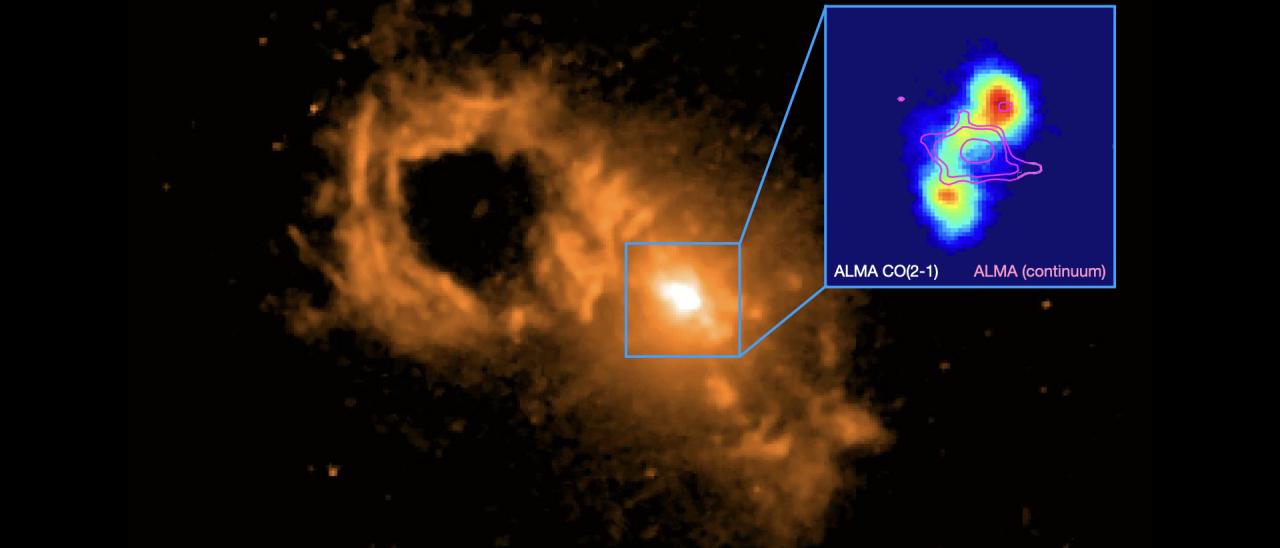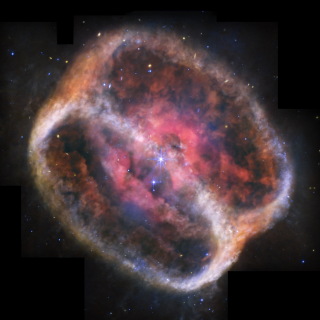Cristina Ramos Almeida, a researcher at the Instituto de Astrofísica de Canarias (IAC), has led research which used data from the ALMA telescope in Chile to understand how supermassive black holes impact the host galaxies they inhabit. The results are published today in the journal Astronomy & Astrophysics.
The supermassive black holes in the centres of galaxies play an important role in regulating their growth, but we still don’t know exactly how this happens or under what circumstances. What we do know is that it occurs during a phase when the black hole is consuming material from the galaxy at a high rate, and its mass is growing quickly. During this phase we say that the galaxy has an active nucleus (or AGN).
These periods of nuclear activity can recur, as long as there is gas available to feed the black hole. One of its effects are the winds of gas driven outwards from the centre of the galaxy by the energy liberated by the active nucleus or other related phenomena. When the gas in these winds is tenuous, they can reach velocities of up to thousands km/s, while for dense gas these velocities only reach hundreds km/s. For the most energetic AGNs, such as some quasars, the winds can drive out all the gas in the centre of a galaxy, preventing further star formation.
To study the dense and cold winds (at temperatures of less than -170º C), it is necessary to use telescopes such as the Atacama Large Millimetre/submillimetre Array (ALMA), which observes radiation at millimetre and submillimetre wavelengths, which lie between the infrared and the radio. ALMA is an interferometer comprising 66 high precision movable antennas, which have a maximum separation of 16 km. This allows the study of galaxies in unprecedented detail in this wavelength range.
Using data from active galaxies obtained with ALMA an article is being published today in the journal Astronomy & Astrophysics by an international team led by IAC researcher Cristina Ramos Almeida. In the article the authors analyse data from a sample of seven highly energetic quasars in the local universe. This work is part of the project “QSOFEED” , whose aim is to understand how supermassive black holes affect the galaxies that host them.
“ALMA has let us study the winds of cold molecular gas from these quasars using emission from the carbon monoxide molecule”, explains Ramos Almeida. “This analysis is important because this cold dense gas is the material from which new stars are formed, and until now there has not been data of this high quality and resolution for a set of dust-obscured quasars in the local universe”. This type of quasar is interesting because it may be a key phase during which the active nucleus is evacuating and consuming gas at a very high rate, which will then give way to a non-obscured phase. Studying these nearby objects is key to understanding what happened in these types of galaxies when the universe had only a quarter of its present age”.
Based on the new data from ALMA the team have discovered that the molecular winds are mainly coplanar with the disc where the majority of the molecular gas is found, and they are relatively compact and slow, reaching maximum velocities of only 200-350 km/s. Nevertheless these winds, together with the action of radio jets in some cases, are responsible for modifying the content and the distribution of the gas in these central regions (the central kiloparsec, which corresponds to ~3300 light years). “Even though the total content of molecular gas in the host galaxies is not significantly changed, the innermost regions are disrupted by the action of these winds” says Anelise Audibert, an IAC researcher who is a co-author of the article.
The next step is to observe a larger sample of obscured quasars with MEGARA, an instrument installed on the Gran Telescopio CANARIAS (GTC), and with ALMA, to characterize its ionized and molecular winds. “We also want to investigate the stellar populations of the host galaxies, to see if the most extreme winds are those which have had the greatest effect on the formation of new stars. This will let us quantify directly the effect of AGN feedback” concludes Patricia Bessiere, an IAC researcher and another co-author of the article, whose research is centred on this aspect of the project.
Artículo: C. Ramos Almeida, M. Bischetti, S. García-Burillo, A. Alonso-Herrero, A. Audibert, C. Cicone, C. Feruglio, C. N. Tadhunter, J. C. S. Pierce, M. Pereira-Santaella, P. S. Bessiere. The diverse cold molecular gas contents, morphologies, and kinematics of type-2 quasars as seen by ALMA. Astronomy & Astrophysics, 658, A155, https://www.aanda.org/component/article?access=doi&doi=10.1051/0004-6361/202141906
IAC contacts:
Cristina Ramos Almeida (cra [at] iac.es (cra[at]iac.es))
Anelise Audibert (jap [at] iac.es (anelise.audibert[at]iac.es))
Patricia Bessiere (jap [at] iac.es (patricia.bessiere[at]iac.es))





